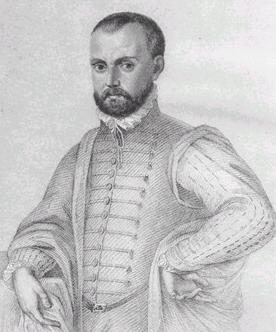
Candida Martinelli's Italophile Site

Main
Page This family-friendly site celebrates Italian culture for the enjoyment of children and
adults. Site-Overview
The family's history parallels
Italy's history. I've divided it into sections listed in the left
column. This concise history is a helpful guide to read before
traveling to Florence and the Vatican.
This humanist philosopher was protected by Lorenzo de' Medici. But
Mirandola, together with another protectorate of Lorenzo, Angelo
Poliziano, turned to Savonarola and against the de' Medici. For
this, it seems, they were poisoned to death with arsenic in 1494, after
the de' Medici were banished from Florence. Mirandola was over 6
feet tall and athletic in build. Poliziano was 5 feet tall and
slim built. All this was discovered recently when their graves in
the Church of San Marco were opened and their remains studied.
Lorenzo the Magnificent had 3 daughters and 3 sons, besides bringing up Giulio,
his nephew.
Lorenzo's eldest son, Piero II de' Medici, Lo Sfortunato
(the Unfortunate),
lived from 1471 to 1503. He suffered a physical handicap, possibly the inherited arthritis Forestier's Disease.
He took over the family business and the title of Lord of Florence
at the age of 21, when
is father died. For the de' Medici to survive in the changing
Italy and Europe, they needed
to keep a balance between the various stronger forces at work: The discoveries of Christopher Columbus in the New
World spurred the gradual beginnings of the Age of Discovery. Amerigo
Vespucci and other map-makers and explorers began to broaden the world
view, as well as ignite a desire to control the new territories and
sources of wealth. A new age began with the death of Lorenzo the
Magnificent, and the de' Medici would resort to new means to retain
their power:
Piero II the Unfortunate was unfortunate in more than
just his health. Under his
reign, the de' Medici were kicked out of Florence in 1494 when Fra'
Girolamo Savonarola, a religious fanatic, started an insurrection.
Savonarola had been preaching for a while about an avenging angel that
was going to arrive and clean Florence of all it's decadence.
So when the French under King Charles VIII arrived in Tuscany, on
their way to attack the King in Naples, Savonarola claimed his
predictions had come true.
And when Piero II failed to stop Charles VIII from
entering Florence, he was seen as assisting the taking of the
city.
Savonarola played on this and managed to worked up support for
a coup, which banished the de' Medici from Florence. Savonarola
proceeded to set up an oppressive religious moral-authority to govern
Florence.
Just a note on the junior branch of the family: they delighted
in all
this and to show their support for Savonarola and the Republican
(popular) forces of Florence, the gave up the de' Medici name and
renamed themselves Popolani (of the People). All branches of the
de' Medici were pretty good and public relations ploys.
When the de' Medici were routed from Florence, their
property was looted, their coat-of-arms
throughout the city defaced, and their palaces taken by the newly formed
Republican government. Much of the de' Medici wealth
was sold at auction with the money going into the new state's coffers.
But like all moral-authority rulers, Savonarola became
increasingly fanatical.
The public eventually revolted
at his strict edicts, and
the Pope ordered his execution. Savonarola and two of his
monks were tortured, hung and burned in the main square of Florence, just as he had had done to sinners under
his reign.
Here are two images of the pier and pyre that were
built in Piazza della Signoria for the occasion, with wood-carriers to
fuel the fire, spectators including children and the officials
officiating.
Savonarola's hangman supposedly said something like
"this was what you were going to do to me". Fun times.
Piero II the Unfortunate died in exile in 1503 at the
young age of 32. The peace Piero's
father, Lorenzo the Magnificent, had held together collapsed as France invaded Italy, and
French soldiers remained in Italy in one way or another until the full unification of Italy in the
late1800s.
Piero II had a son and daughter. His son Lorenzo II became the
Duke of Urbino instead of the Lord of Florence as the other first born
de' Medici sons, because his family was still in exile. Lorenzo II
de' Medici lived from 1492 to 1519.
A portrait of Lorenzo II painted in 1586, long after his death.
But in 1512, Lorenzo II did return to Florence.
The Republic fell to an army paid for by Pope Julius II (of Michelangelo
and the Sistine Chapel ceiling fame), and headed by Giulio and Giovanni
de' Medici, both of whom had already taken Holy Orders.
The de' Medici family took back
their property and restored the damaged properties, added battle
reinforcements to the Medici Palace, and moved back into the family
homes.
Lorenzo II, the idealized version, by Michelangelo from the Medici Tomb
Lorenzo II did not live long enough to regain the family title of Lord
of Florence. He died two years after returning to Florence, in
1519, at the age of 27, of syphilis, only days after his wife's death in childbirth.
The child lived, however,
so little Caterina de' Medici was orphaned in her first week of life.
She was taken in by her great-uncle Giulio. Little Caterina would go on to more than make up for
her father's lost power and prestige, as Queen of France.
Michelangelo
Just a side note...after Lorenzo the Magnificent's death,
Michelangelo left the Medici
Palace, but returned for a commission by Piero II the Unfortunate.
When the Savonarola revolt happened, Michelangelo took
refuge in a
room under the Basilica of San Lorenzo, where he decorated the walls with
sketches to pass the time. The room was recently rediscovered and
is sometimes allowed to be viewed by visitors to the Basilica.
Michelangelo later escaped, but returned twice to Florence, once
under
Savonarola's religious control which he approved of in the beginning, and later under the
Republic of
Florence. Michelangeo was 26 years old by then.
The Republic of Florence commissioned Michelangelo to
create the statue of David in 1504 for the new Republic, as a symbol of
the Republic standing strong against the bigger
'Goliath' forces around it, namely the de' Medici with their hired
armies.
The head of the Signoria dared to tell Michelangelo
he thought David's nose was too large and to fix it. People were
shocked when feisty Michelangelo quietly climbed up the scaffolding and
chiseled away at David's nose. Marble dust fell to the ground
below. The head of the Signoria was pleased and said the nose was
now perfect.
Those in the know, however, saw Michelangelo take a
handful of marble dust from his pocket and only pretend to chisel.
He dropped the dust as he play-acted, and never altered David's nose.
The people of Florence understood the symbolism of
the David, and expressed their
gratitude by pasting thank-you notes to the base of the statue,
addressed to Michelangelo.
Machiavelli
Another interesting side note of this period is about the member of the new Florentine Republic's government
most famous
to us today: Machiavelli.
Machiavelli worked as an
civil-servant, ambassador, and organizer of the Florentine
military forces.
As ambassador, he tried to get recognition for the young Republic from other city-states
and their ruling princes. He sought not only recognition, but
protection because the de' Medici family had lots of pull when it came
to garnering forces to wage their return to Florence, including many
Dukes and the Pope and the Papal forces.
Machiavelli went into exile in 1512 when the Republic fell
to the de'
Medici forces, and he spent his evenings in exile writing two books:
Sadly, most people know
Machiavelli for his short work, The Prince. Even sadder, most
believe he was advocating prince-run governance!
Machiavelli in his court dress in later
life, which he always wore when writing his books
Machiavelli also wrote a History of Florence,
that was dedicated to, paid for, and quite favorable to the de' Medici.
It was his way of trying to make a living and win favor with the
returned rulers. Here's a link to the
document on-line.
To the next section:
The Roman Renaissance, Cardinal Giulio de' Medici and Pope Leo X
(Giovanni de' Medici)
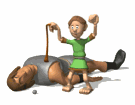
The
de' Medici Dynasty
![]()

The de' Medici Dynasty and Italian History
The Late-Middle-Ages, Early Renaissance, Giovanni: The Founder
The Early Renaissance, Cosimo and Lorenzo: The Elders
The High Renaissance, Piero and his son, Lorenzo the Magnificent
Florentine Independence and the End of the
Florentine Renaissance, Piero II and Lorenzo II in Exile
The Roman Renaissance, Cardinal Giulio de' Medici and Pope Leo X
(Giovanni de' Medici)
The End of Florentine Independence, Pope Clement VII (Giulio de' Medici), Alessandro, and
Caterina de' Medici
The Late Renaissance, The Grand Duke and Duchess of Tuscany: Cosimo de' Medici
and Eleonora di Toledo
The Age of Discovery, Francesco and Ferdinando: Two Very Different Brothers
The Age of Reason and The Enlightenment, The Decline of de' Medici Reason and Enlightened
Governance
Florentine Independence and the End of the
Florentine Renaissance
Piero II and Lorenzo II in Exile
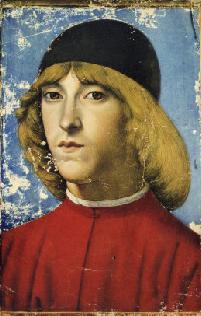
![]()
Piero Di Lorenzo De' Medici

![]()
Portrait of Savonarola
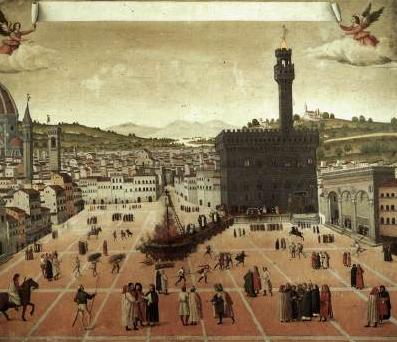
![]()
The Torture of Savonarola
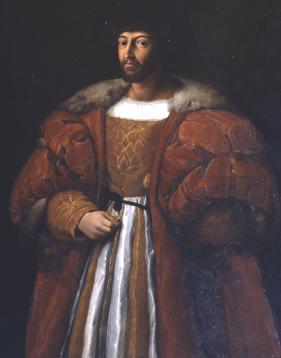
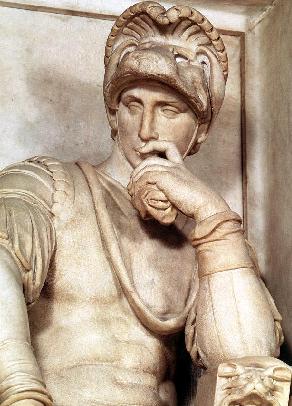
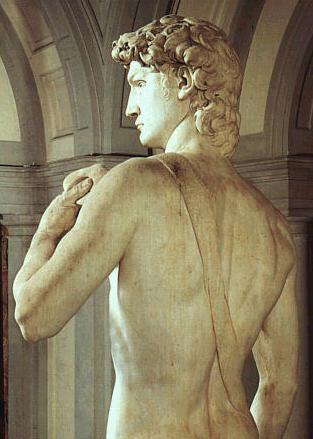
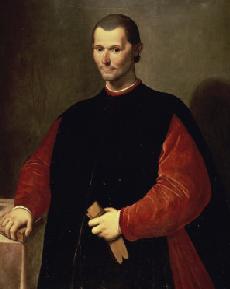
![]()
Niccolo Machiavelli
